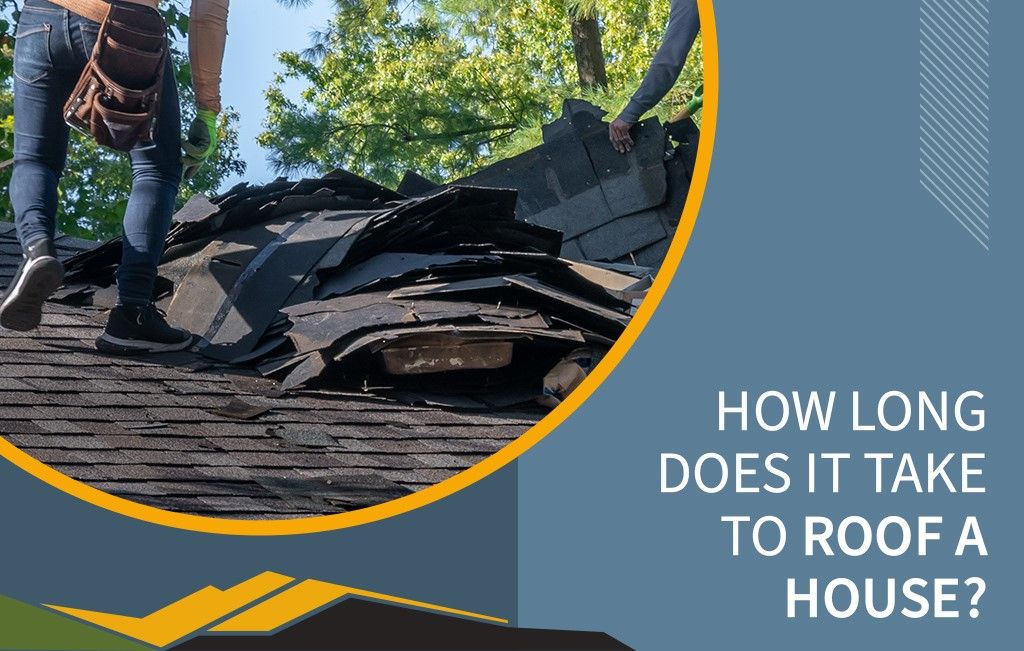Summary:
- Roof replacement typically takes about a week and has numerous steps. These include removing the old roof, inspecting the deck, and installing new shingles.
- The process can be noisy and disruptive, so plan to adjust your daily routines while the work is being done.
- During some parts of the process, you may also need to limit your time outside—as falling debris can be a safety hazard.
- Roof replacement can be costly and time-consuming, but Roof Maxx offers an alternative treatment that revitalizes shingles and extends roof life by up to 15 years.
- Roof Maxx treatment takes just a few hours and costs up to 80% less than a full replacement, without the noise and debris associated with traditional roofing.
Your roof is one of the most important parts of your home, but roofing can be a time-consuming process. It’s also complicated and often noisy—which means any time spent replacing your roof is time you won’t be able to spend enjoying your home without distractions.
Below, our team at Roof Maxx goes into detail about how long the roofing process takes—including a list of steps involved and how you’ll need to adjust your daily routines while they’re being completed. We’ll also provide you with some alternatives that may help you revitalize your roof so that you don’t need to replace it as often.
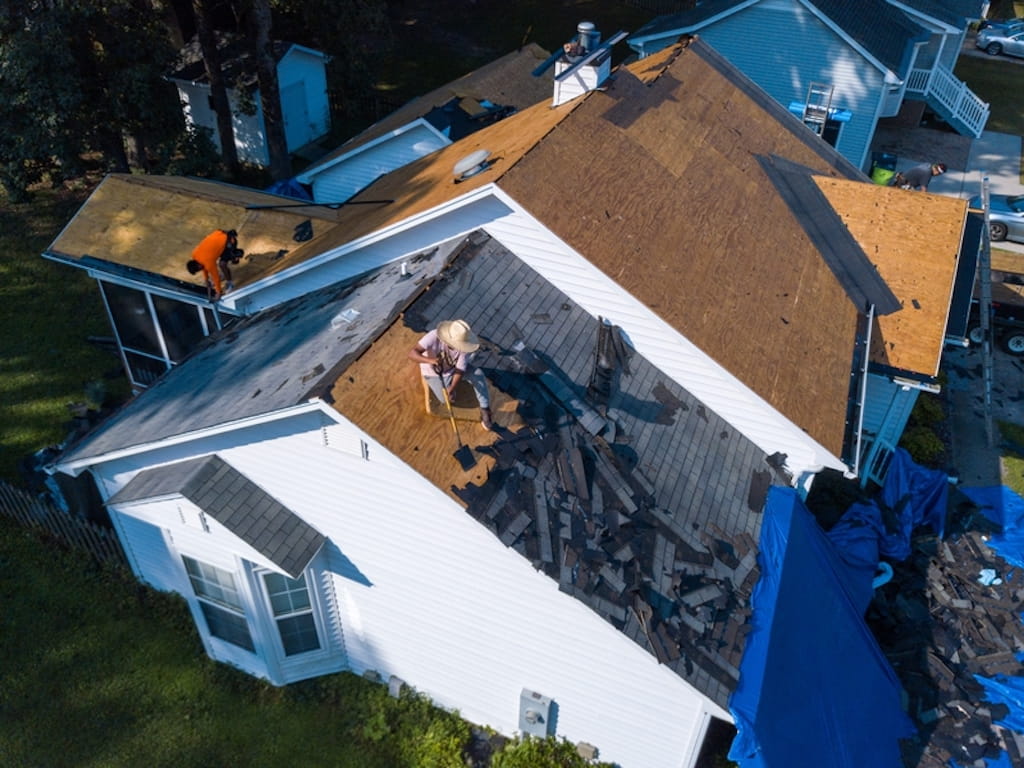
The Steps to Replacing Your Roof
Here’s what happens when you go through a roof replacement. This process can take up to 3 days just to put on new shingles, and can stretch out to a week or even longer when you account for the other steps involved. This is a much longer project than treating your roof with Roof Maxx, which we’ll explain in more detail afterwards.
Learn More: Does Roof Maxx Work?
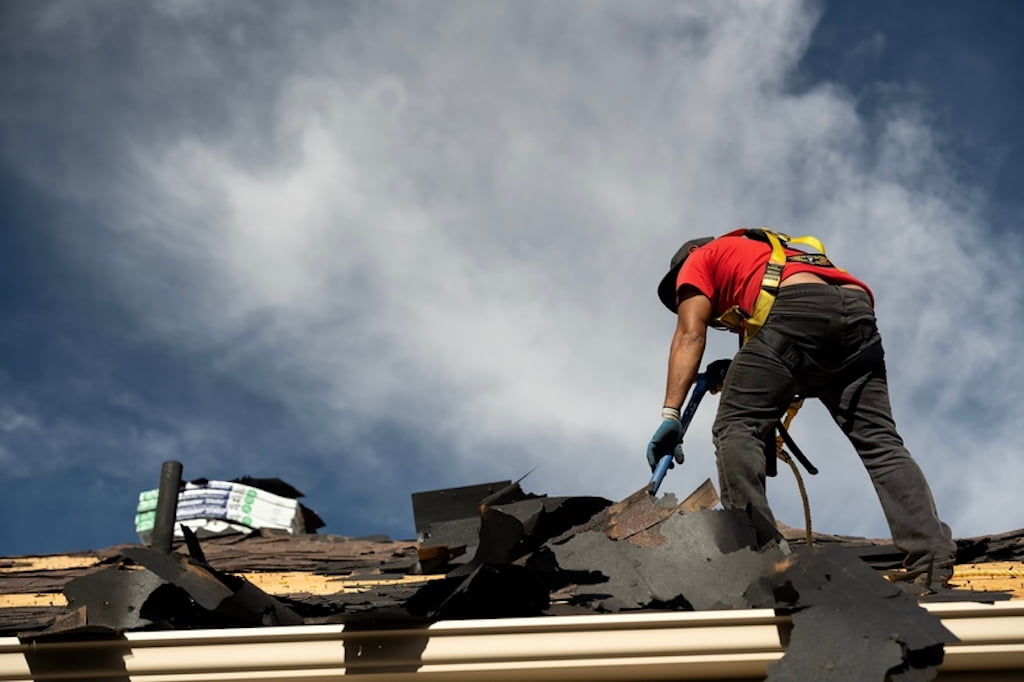
Removing the Old Roof
Before your new roof can be installed, the old one has to come off. This involves removing all the shingles, nails, and underlayment down to the roof deck, so the surface is prepared for the new materials. If your roof has multiple layers of shingles, this step could take longer.
- Average time required: 1–2 days (depending on the size and complexity of your roof)
- Effects on homeowners: The process is noisy and may cause some vibrations inside the house. For safety reasons, it’s also best to limit outdoor activities while the old roof is being removed. Keep children and pets indoors so they aren’t in the way of falling debris.
Inspecting the Roof Deck
Once the old roof is removed, the decking underneath must be inspected for damage. This step ensures the surface is solid and can support the new roof. If any areas of the decking are rotten or damaged, they will need to be replaced before moving forward.
- Average time required: 2–4 hours
- Effects on homeowners: Minimal disruption unless significant repairs are needed. However, if rot is found, there could be an additional delay while the deck is reinforced or replaced.
Checking the Flashing
Flashing is installed around chimneys, vents, and other roof protrusions to prevent water from seeping into your home. During replacement, the roofer will check the existing flashing to see if it can be reused or if new flashing needs to be installed.
- Average time required: 1–3 hours
- Effects on homeowners: This is a relatively quiet process that shouldn’t interfere much with your day-to-day activities.
Installing the Drip Edge
The drip edge is a metal strip installed at the roof’s edges to guide water into the gutters. Without it, water can seep under the shingles and cause damage to the roof deck and fascia. This step ensures that water flows where it should, preventing long-term problems.
- Average time required: 2–3 hours (can take place on the same day as checking the flashing)
- Effects on homeowners: The installation of the drip edge is fairly quick, but some noise and movement on the roof are still to be expected.
Installing the Underlayment
Underlayment provides an extra layer of protection between your roof deck and the shingles. It’s typically made from felt or synthetic materials and helps to prevent water and ice damage.
- Average time required: 3–5 hours
Effects on homeowners: You should expect some noise from this process—although it’s generally less disruptive than shingle removal or placement. This will probably happen the day after checking the flashing and installing the drip edge.
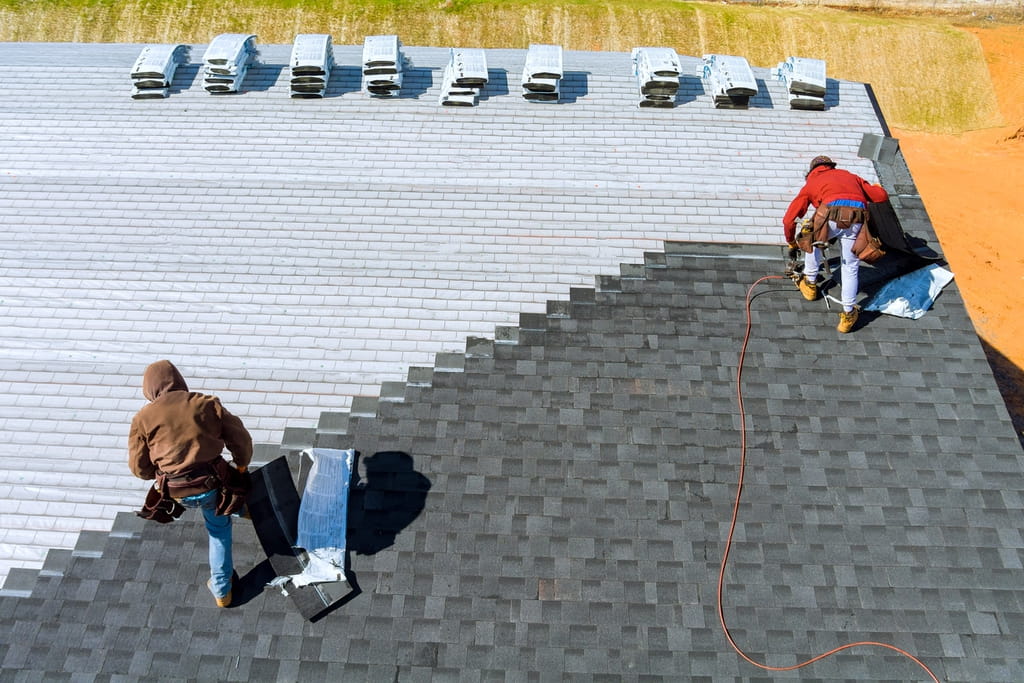
Placing New Shingles
With the roof prepped, it’s time to install the new shingles. This is one of the most labor-intensive steps and involves nailing down rows of shingles, starting from the bottom of the roof and working up to the top.
- Average time required: 1–3 days
- Effects on homeowners: This step is noisy, as hammering is required. It may also cause vibrations inside the house, so be prepared for some disruption. Wearing earplugs or noise-canceling headphones is recommended if you work from home.
Collecting Debris
Once the shingles are installed, any remaining debris, old materials, or nails are cleaned up. This helps ensure a safe environment for your family and protects your yard from damage.
- Average time required: 2–4 hours
- Effects on homeowners: This part of the job is fairly quiet, and the crew will likely be in and out quickly.
Final Inspection
After everything is in place, a final inspection is conducted to ensure the roof has been installed correctly and meets safety standards. The roofer will check for any missed spots, make sure the flashing and seals are tight, and confirm that all debris has been removed.
- Average time required: 1–2 hours
- Effects on homeowners: Little to no impact. You may be asked to walk around the property with the contractor for a final review.
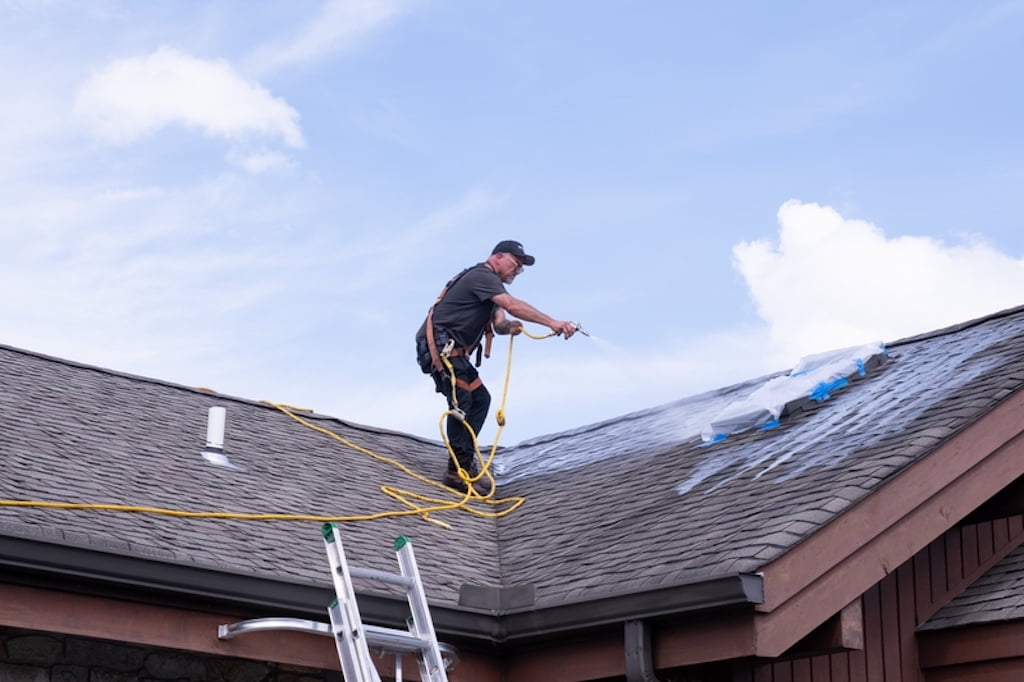
Using Roof Maxx As an Alternative to Roof Replacement
As you can see from the steps above, fully replacing your roof often takes a week or more—and can limit your ability to live comfortably at home while the work is being performed. But total roof replacement isn’t always necessary, especially if your shingles aren’t cracked or broken.
Treating your shingles with Roof Maxx only takes a few hours for most homes, and involves no loud construction or debris. Professionals simply spray an eco-friendly solution onto your roof that penetrates the shingles over time, restoring their natural oils and extending their lifespan by up to 15 years. It can also cost up to 80% less than a full roof replacement.
Roof Maxx is ideal for single family homes, as well as multi-family and commercial properties. Learn more about how this approach can save you time and money while improving the condition of the roof over your head.
Frequently Asked Questions about Roof Replacement
Can I save time and money by replacing my own roof?
Unfortunately, you’re not likely to save time or money if you do your own roof replacement. Roofing is a specialized task that requires the right tools, experience, and safety precautions. Without these, the job can take much longer and may not be done correctly, leading to future problems that will cost more to fix.
Hiring professionals ensures the work is done quickly and efficiently, with fewer risks to you and your property. Having your roof treated with Roof Maxx can save you even more money by costing a fraction as much and ensuring that your roof needs to be replaced less often.
How long will my roof last before it needs to be replaced?
Most roofs with asphalt shingles last 12-20 years with proper maintenance, depending on the climate and other environmental factors where you live. However, if you apply Roof Maxx at the 6-15 year mark, you can add up to 15 years to your roof’s total life expectancy.
Will Roof Maxx affect my roof’s warranty?
Roof Maxx will not void your manufacturer’s warranty for roofing materials—and it comes with our own 5-year warranty as well, which remains valid even if your manufacturer’s warranty becomes voided due to time or transfer restrictions.
